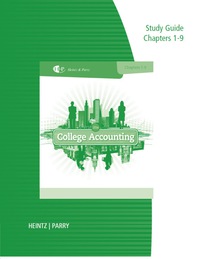Question
Refer to Tables A-1 through A-5 in Appendix II of the text for the operational definitions of and formulas for numerous common financial ratios, including
Refer to Tables A-1 through A-5 in Appendix II of the text for the operational definitions of and formulas for numerous common financial ratios, including profitability, liquidity, leverage, activity, and shareholders' return. Using these formulas, complete at least one ratio from each of the five categories, though you may apply as many of the ratios for which you can find the required information in the firm's financial reports. On your calculations page, specify for which formulas you are solving.
In an assessment of approximately 750 words, address the following:
- Determine which of the ratios provide the most key insights into the firm's current level of performance. How can you assess whether the results of your calculations are positive or negative? Explain which of the ratios give you reason to be concerned with the organization's current strategy and why.
- The Organizational and Operational Plans assignment references the possible benefits and risks of forming a strategic alliance. What would be the risks of forming a strategic alliance in terms of the firm's profitability ratios? Which of those five ratios is most likely to reveal immediate information for analysis of the alliance's effectiveness?
- Considering today's financial climate, how likely is it that the organization could acquire the capital necessary to support an aggressive value-enhancement strategy? From where would that capital originate? Compared to current interest rates, what do you believe is a realistic interest rate the firm might incur? Which of the liquidity ratios will be impacted by the influx of capital, if borrowed? Strategic Management: Competitiveness and Globalization: Concepts and Cases
Appendix II Financial Analysis in Case Studies Table A-1 Profitability Ratio TABLE A-1 Ratio formula WHAT IT SHOWS 1. Return on total assets Profits after taxes/Total assets The net return on total investments of the firm or or Profits after taxes + Interes / Total assets The return on both creditors and shareholders investments 2. Return on stockholders equity (or return on net worth) Profits after taxe / Total stockholders equity How profitably the company is utilizingshareholders funds 3. Return on common equity Profits after taxes Preferred stock dividend / Total stockholders equity Par value of preferred stock The net return to common stockholders 4. Operating profit margin (or return on sales) Profits before taxes and before interes / Sales The firms profitability from regulaoperations 5. Net profit margin (or netreturn on sales) Profits after taxe / Sales The firms net profit as a percentage of total sales Table A-2 Liquidity Ratios Ratio Formula What It Shows 1. Current ratio Total debt / Total assets Total borrowed funds as a percentage of total assets 2. Debt-to-equity Total debt / Total shareholders equity Borrowed funds versus the funds provided by shareholders 3. Long-term debt-to-equity Long-term debt / Total shareholders equity Leverage used by the fir 4. Times-interest-earned (or coverage ratio) Profits before interest and taxe / Total interest charges The firms ability to meet all interestpayments 5. Fixed charge coverage Profits before taxes and interest + Lease obligation / Total interest charges + Lease obligations The firms ability to meet all fixecharge obligations including lease payments Table A-4 Activity Ratios Ratio Formula What It Shows 1. Inventory turnover Sales / Inventory of finished good The effectiveness of the firm iemploying inventory 2. Fixed-assets turnover Sales / Fixed assets The effectiveness of the firm in utilizinplant and equipment 3. Total assets turnover Sales / Total assets The effectiveness of the firm in utilizintotal assets 4. Accounts receivable turnover Annual credit sales / Accounts receivable How many times the total receivables have been collected during the accounting period 5. Average collecting period Accounts receivable / Average daily sales The average length of time the firmwaits to collect payment after sales Table A-5 Shareholders Return Ratios Ratio Formula What It Shows 1. Dividend yield on common stock Annual dividend per share / Current market price per share A measure of return to common stock-holders in the form of dividends 2. Price-earnings ratio Current market price per share / After-tax earnings per share An indication of market perception of the firm; usually, the faster-growing orless risky firms tend to have higher PEratios than the slower-growing or more risky firm 3. Dividend payout ratio Annual dividends per share / After-tax earnings per share An indication of dividends paid out as a percentage of profit 4. Cash flow per shar After-tax profits + Depreciatio / Number of common shares outstanding A measure of total cash per share avail-able for use by the firm
Step by Step Solution
There are 3 Steps involved in it
Step: 1

Get Instant Access to Expert-Tailored Solutions
See step-by-step solutions with expert insights and AI powered tools for academic success
Step: 2

Step: 3

Ace Your Homework with AI
Get the answers you need in no time with our AI-driven, step-by-step assistance
Get Started


